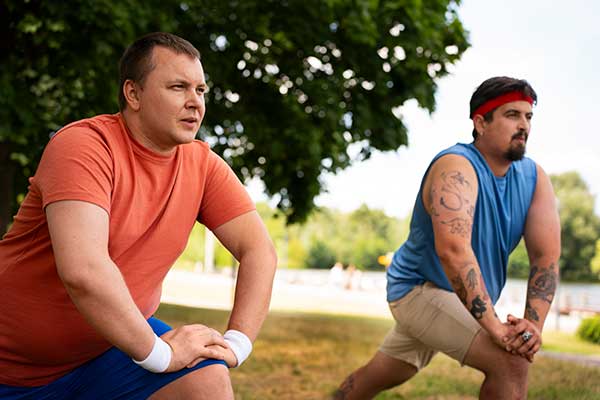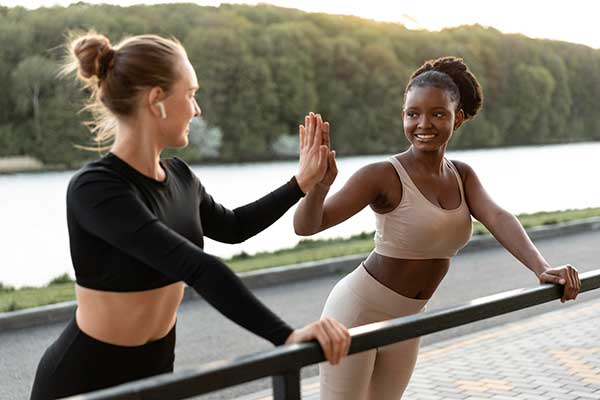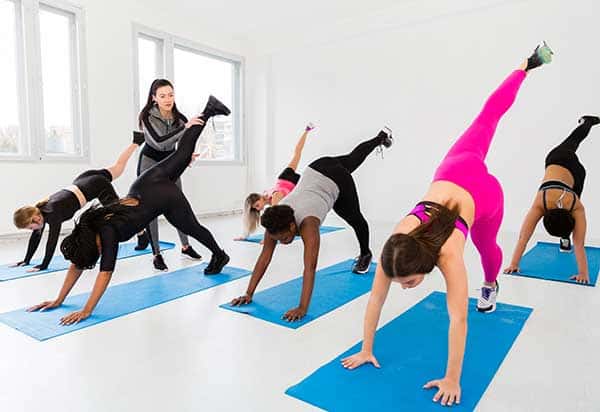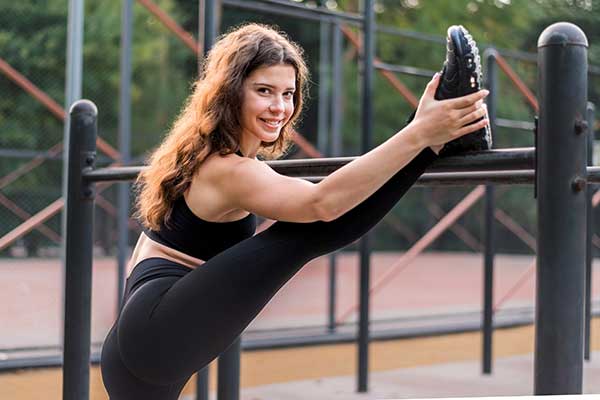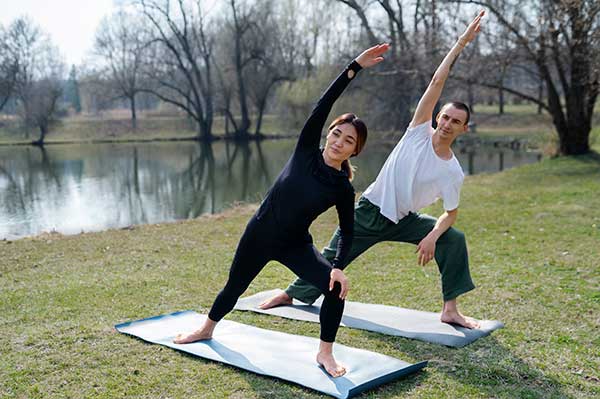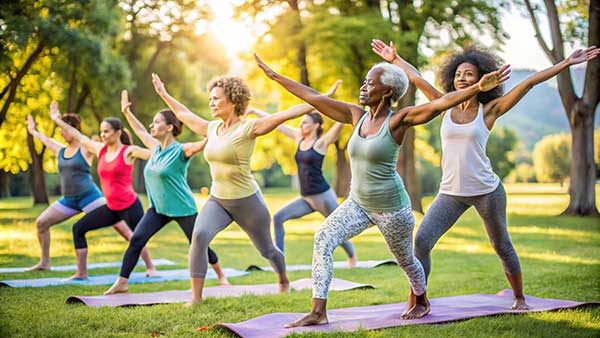Best Core Strengthening Exercises and Stretches to Relieve Lower Back Pain
Introduction: The Importance of Core Strength for Lower Back Pain Relief
Lower back pain can be a real hurdle in our daily lives, affecting everything from how we sit at work to the activities we enjoy on weekends. You might not realize it, but strengthening your core is one of the most effective ways to alleviate that nagging discomfort. A strong core supports your spine and improves posture, reducing strain on those lower back muscles.
Imagine being able to bend down without wincing or lifting groceries without feeling like you’ve just run a marathon! It’s possible when you incorporate specific exercises and stretches into your routine. In this guide, we’ll explore the best core strengthening exercises and stretches designed specifically for relieving lower back pain. Let’s dive in and discover how a few simple movements can make a world of difference for your comfort and mobility.
Understanding the Core Muscles
The core is more than just a six-pack. It comprises various muscles that stabilize and support the spine. These include the rectus abdominis, transverse abdominis, internal and external obliques, as well as the erector spinae.
A strong core plays a crucial role in maintaining good posture. When these muscles are weak, it often leads to imbalances and discomfort, especially in the lower back.
Additionally, your core helps with balance and coordination. It enables efficient movement during physical activities like walking or running.
Understanding these muscle groups empowers you to target them effectively through exercises and stretches. This targeted approach can lead to better results in relieving lower back pain while enhancing overall strength and stability.
Top 5 Core Strengthening Exercises:
Planks are a powerhouse move. They engage multiple muscle groups, including your abs, back, and shoulders. Start in a push-up position but rest on your forearms instead of your hands. Keep your body straight and hold.
Dead Bugs are fun yet effective for building stability. Lie on your back with arms extended toward the ceiling and knees bent at 90 degrees. Slowly lower opposite arm and leg towards the ground while keeping your core tight.
Bird Dogs enhance balance and coordination. Begin on all fours; extend one arm forward while stretching the opposite leg behind you. Hold briefly before switching sides to work both ends of the core.
Russian Twists target obliques perfectly. Sit with knees bent, lean slightly back, then twist from side to side while holding a weight or just clasping hands together.
Bicycle Crunches bring dynamic movement into play. Lying on your back, lift legs off the floor in a cycling motion while bringing elbow to knee alternately—keep that rhythm steady!
– Planks
Planks are a powerhouse exercise for core strengthening. They engage multiple muscle groups, making them highly effective for building stability and endurance.
To perform a plank, start by lying face down on the floor. Lift your body off the ground, balancing on your forearms and toes. Keep your back straight and avoid sagging or arching at the hips. The key is to maintain proper form throughout.
Hold this position for 20-30 seconds initially, then gradually increase as you build strength. It’s not just about time; focus on breathing steadily and tightening your core throughout the hold.
Adding variations can also keep things interesting. Try side planks or elevated planks to challenge different muscles in your torso while still targeting that lower back support.
Consistency with planks can lead to noticeable improvements in posture and overall spinal health over time.
– Dead Bugs
Dead Bugs are a fantastic exercise for building core strength while being easy on your lower back. This movement engages multiple muscle groups, helping to stabilize and support your spine.
To perform the Dead Bug, lie on your back with your arms extended towards the ceiling and knees bent at 90 degrees. Slowly lower one arm and the opposite leg towards the floor, keeping both just above it without touching down. Return to starting position and repeat on the other side.
This alternating pattern is not only fun but also promotes coordination between limbs. It’s essential to maintain a neutral spine throughout the movement, ensuring you don’t arch your back as you extend.
Adding Dead Bugs into your routine can help alleviate tension in your lower back by enhancing overall core stability. Plus, they’re accessible for all fitness levels!
– Bird Dogs
Bird Dogs are a fantastic exercise that targets core stability and strength while enhancing coordination. This movement engages multiple muscle groups, making it a favorite among fitness enthusiasts.
To perform Bird Dogs, start on all fours with your hands directly under your shoulders and knees aligned with your hips. Slowly extend one arm forward and the opposite leg backward, keeping both parallel to the ground. It’s crucial to maintain balance throughout the movement.
Focus on engaging your core as you reach outwards. Hold this position for a few seconds before returning to the starting point. Alternate sides to ensure an even workout.
This exercise not only builds strength but also improves posture and spinal alignment—key factors in alleviating lower back pain. Regular practice can lead to enhanced stability in everyday movements, helping prevent discomfort from recurring activities or prolonged sitting sessions.
– Russian Twists
Russian Twists are a fantastic way to engage your core while also enhancing mobility. This exercise targets the oblique muscles, which play a crucial role in stabilizing your torso.
To begin, sit on the floor with your knees bent and feet flat. Lean back slightly while keeping your spine straight. You can hold a weight or keep it simple by clasping your hands together.
As you twist to one side, feel the tension build in your abs. Return to center and rotate to the opposite side. Each movement should be controlled for maximum effectiveness.
Aim for several repetitions on each side. Not only does this exercise help strengthen core muscles, but it also improves balance and coordination—two essential components for overall fitness and injury prevention. Embrace Russian Twists as part of your routine for enhanced strength!
– Bicycle Crunches
Bicycle crunches are a dynamic exercise that targets multiple muscle groups, making them highly effective for core strengthening. This movement engages not only the abdominal muscles but also the obliques and hip flexors.
To perform bicycle crunches, lie on your back with your hands behind your head. Lift your legs off the ground, bending them at a 90-degree angle. As you bring one knee towards your chest, twist your torso to touch the opposite elbow to that knee. Alternate sides in a cycling motion.
The beauty of bicycle crunches lies in their versatility; they can be modified for different fitness levels. Beginners may start slowly or keep their feet on the floor until they build strength and confidence.
Incorporating this exercise into your routine can significantly enhance stability and reduce lower back pain by promoting better posture and alignment throughout daily activities.
Stretches for Lower Back Pain Relief:
Stretches can be a game-changer for lower back pain relief. They help improve flexibility and ease tension in your muscles.
The Cat-Cow Stretch is perfect for gently warming up your spine. It encourages mobility while soothing tightness. Transitioning between arching and rounding the back feels wonderful.
Child’s Pose offers deep relaxation by stretching the lower back and hips. This restorative pose calms the mind as you breathe deeply, inviting peace into your body.
Cobra Pose opens up the chest and stretches out those stiff lumbar muscles. Lying face down, lift your torso while keeping your pelvis grounded—it’s invigorating!
Pigeon Pose targets hip flexors that often contribute to lower back discomfort. As you sink into this stretch, feel how it releases built-up tension in both hips and lower back alike.
Incorporate these stretches regularly to enhance flexibility and alleviate discomfort effectively!
– Cat-Cow Stretch
The Cat-Cow stretch is a gentle yet effective way to relieve lower back tension. This dynamic movement flows between two positions, helping to increase spinal flexibility and mobility.
Begin on all fours with your hands aligned under your shoulders and knees beneath your hips. As you inhale, arch your back, letting your belly sink toward the floor while lifting your head and tailbone towards the sky. This is the Cow position.
Transition into Cat by exhaling slowly as you round your spine upwards. Tuck in your chin and draw in your belly button towards the spine. Feel each vertebrae expand and contract with every breath.
Repeat this flow for several cycles, focusing on smooth movements rather than speed. The rhythm of breathing combined with these stretches can create a sense of calm that soothes both body and mind.
– Child’s Pose
Child’s Pose is a gentle stretch that can work wonders for your lower back. It invites relaxation while elongating the spine, making it ideal for relieving tension.
To get into this position, start on all fours. Slowly sit back onto your heels, extending your arms forward on the floor. Feel the stretch as you sink deeper into the pose. Breathe deeply and let go of any stress.
This pose not only helps to alleviate discomfort but also promotes mindfulness. Staying in Child’s Pose for several breaths allows you to connect with your body and calm your mind.
Whether you’re recovering from a workout or simply seeking relief after a long day, adding this simple stretch to your routine can provide significant benefits for both body and spirit. Embrace its restorative qualities; they might just be what you need today.
– Cobra Pose
Cobra Pose, known as Bhujangasana in yoga, is a powerful stretch that targets the spine and abdominal muscles. It promotes flexibility and helps release tension in the lower back.
To perform Cobra Pose, lie face down on your mat with your legs extended behind you. Place your hands under your shoulders and gently press into them. As you inhale, lift your chest off the ground while keeping your pelvis grounded.
This pose encourages deep breathing, allowing for relaxation of tight muscles. You’ll feel a gentle arch in your back as you engage those core stabilizers.
Hold the position for several breaths. Focus on lengthening through your spine rather than forcing depth into the bend. The heat generated during this pose can foster healing by increasing blood flow to strained areas.
Incorporating Cobra Pose into your routine could be a game-changer for easing discomfort associated with lower back pain.
– Pigeon Pose
Pigeon Pose is a fantastic stretch for relieving lower back pain. This yoga position opens up the hips while promoting flexibility in the spine.
To get into Pigeon Pose, start on all fours. Bring your right knee forward toward your right wrist and extend your left leg behind you. Lower yourself down gently, allowing your body to sink into the stretch.
Feel free to rest on your forearms or fully lay down if that feels comfortable. Breathe deeply as you hold this position, focusing on releasing tension with each exhale.
Switch sides after holding for several breaths. This pose not only stretches the hip flexors but also encourages deep relaxation in the lower back area.
Practicing Pigeon regularly can help improve mobility and reduce stiffness in both the hips and lower back regions.
Incorporating Core Strengthening and Stretches into Your
Incorporating core strengthening exercises and stretches into your daily routine can significantly enhance your overall well-being. Start with a few minutes each day, gradually increasing the intensity and duration as you become more comfortable. Consistency is key; even short sessions can yield impressive results over time.
Consider setting specific goals to stay motivated. Perhaps aim for three days a week of focused workouts or integrate these moves into your existing fitness regimen. Listening to your body is crucial—if something feels uncomfortable, modify it or consult with a professional.
Pairing these exercises and stretches with proper hydration and nutrition will also aid in recovery and performance. Remember that balance plays an essential role in any fitness journey. Combining strength training, flexibility work, and aerobic activities creates a holistic approach to health.
As you incorporate these practices into your life, you’ll likely notice not just relief from lower back pain but improved posture, stability, and confidence in various physical activities. Embrace this journey towards stronger core muscles; it’s an investment in yourself that pays off richly over time.
- About the Author
- Latest Posts
Johnnie D. Jackow Sr., the founder and CEO of Total Body Fitness, Worldwide, has a long-standing career in the fitness industry. He began as a certified personal trainer in the mid-90s and soon after authored his first weight loss book in 1998. This led to the launch of Total Body Fitness, Nationwide in the USA at the same time. Johnnie gained recognition as the fitness guru of his time, running infomercials on local TV late at night in Houston, Texas. Over the years, he has helped more than 40,000 individuals from all over the world achieve their health and fitness goals. With over 60,000 hours of documented training in integrative functional medicine, he completed his PhD in human physiology in 2010. His primary objective is to assist people in reaching their health and fitness goals through alternative approaches rather than relying solely on conventional medicine and pharmaceutical drugs. Today, with almost three decades of experience under his belt, Johnnie continues to be a leader in health and fitness.

